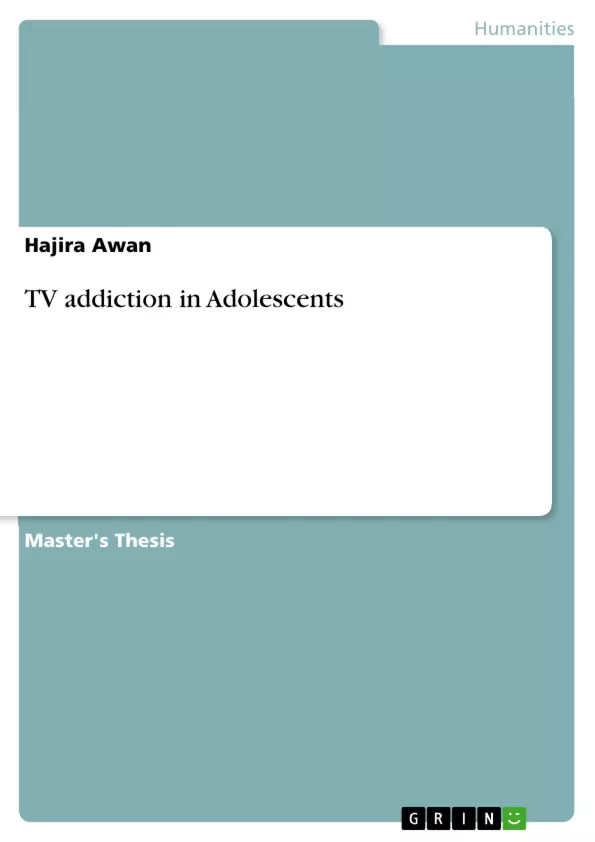Personality is the total quality of an individual due to bodily pattern, mental integration and chemistry of internal functions including almost all types of introvert and extrovert traits. However, the traits of any individual’s personality development own to heredity, but electronic form of surroundings may also be considered equally important. Television is a widespread electronic media influencing adolescents’ lives. The impact of television on adolescents depends on many factors such as how they watch TV, personality factors and whether alone or with their parents and whether the parents talk with them about what they see on TV. The present study was designed to investigate the addiction level of TV in adolescents. Furthermore, it was also explore the relationship between addiction level, personality styles and television watching styles using the standardized scale. Subjects were adolescent boys and girls studying in different schools and colleges in Faisalabad. The collected data were analyzed by applying appropriate statistical techniques to interpret the results.
Table of Contents
- Chapter No 1.
- Introduction
- Psycho-social factors
- Behavioral factors
- Main signs of TV addiction
- Overcoming TV addiction
- Chapter No 2.
- Personality styles or characteristics of adolescents
- Extraversion personality styles
- Neuroticism personality styles
- Theories of TV addiction
- Research on TV addiction
- TV plays an important role in adolescent's lives
- Negative effects of TV on adolescent`s development
- Chapter No 3.
- Research work
- Chapter No 4.
- Conclusion and Recommendations
Objectives and Key Themes
This study investigates the level of television addiction in adolescents and explores the relationship between addiction level, personality styles, and television watching styles. The research aims to provide a comprehensive understanding of how television consumption impacts adolescent development and identify potential interventions to mitigate negative effects.
- Television addiction in adolescents
- Personality styles and their influence on TV viewing habits
- The impact of television on adolescent development
- The role of parental involvement in mitigating negative effects of television
- Potential strategies for promoting healthy television consumption among adolescents
Chapter Summaries
Chapter 1: TV Addiction Introduction
This chapter introduces the concept of personality and its development, emphasizing the influence of environmental factors, particularly electronic media like television. It highlights the importance of understanding television's impact on adolescents, considering factors such as viewing habits, personality traits, and parental involvement.
Chapter 2: Personality Styles or Characteristics of Adolescents
Chapter 2 delves into the different personality styles or characteristics prevalent among adolescents, with a focus on extraversion and neuroticism. It explores the relationship between these personality traits and television viewing habits, examining how individuals with different personality styles might engage with television differently.
Chapter 3: Research Work
This chapter details the research methodology employed in the study, outlining the research design, participant selection, data collection methods, and statistical analysis techniques used to investigate the relationship between television addiction, personality styles, and viewing habits in adolescents.
Keywords
The study focuses on the keywords: television addiction, adolescents, personality styles, extraversion, neuroticism, television viewing habits, parental involvement, and the impact of television on adolescent development.
- Citation du texte
- Hajira Awan (Auteur), 2013, TV addiction in Adolescents, Munich, GRIN Verlag, https://www.grin.com/document/286671



